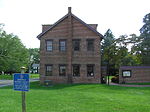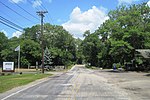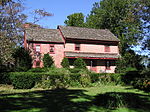North Branch Rancocas Creek
Burlington County, New Jersey geography stubsNew Jersey river stubsRivers in the Pine Barrens (New Jersey)Rivers of Burlington County, New JerseyRivers of New Jersey ... and 1 more
Tributaries of Rancocas Creek
The North Branch Rancocas Creek is a 31-mile-long (50 km) tributary of Rancocas Creek in southwestern New Jersey in the United States.The creek starts in the Pine Barrens of Brendan T. Byrne State Forest and Fort Dix Military Reservation, near Browns Mills.From its confluence with Rancocas Creek, tidewater extends upstream to the upper end of Mount Holly.The North Branch Rancocas Creek drains an area of 167 square miles. The creek is among the more developed portions of the Rancocas Creek watershed.
Excerpt from the Wikipedia article North Branch Rancocas Creek (License: CC BY-SA 3.0, Authors).North Branch Rancocas Creek
East Railroad Avenue,
Geographical coordinates (GPS) Address Nearby Places Show on map
Geographical coordinates (GPS)
| Latitude | Longitude |
|---|---|
| N 39.979534 ° | E -74.744975 ° |
Address
East Railroad Avenue
East Railroad Avenue
08060
New Jersey, United States
Open on Google Maps







